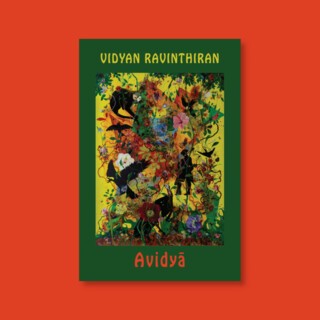‘And the rest, as no one says, is fiction’: on writing ‘How to be a French Girl’
Posted by Rose Cleary

Rose Cleary’s fierce, disturbing and funny debut How to be a French Girl tells the story of a young woman’s attempt to escape boredom through reinvention. Here, Cleary discusses the process of writing the novel, from early inspiration on a long daily commute to its publication by Weatherglass Books this week.
When I started writing How to be a French Girl, I was still commuting by train from Essex to London for work, Monday to Friday. Intercity train commuting is like being disconnected from the ‘real’ for hours every week, each day bookended by your entering a sealed-off otherworld, with its own unique behavioural demands. Hierarchies based on who is nearest the train doors. Different levels of power based on the speed of your walk. The territorial placing of bags on seats – and the righteousness of those who ask for the bag to be removed. Everyone has to be quiet. And everyone must act as though it is completely normal: even when someone is falling asleep on your shoulder, even when you’re pushed up inside someone’s armpit. Just read the Metro, listen to a podcast, and don’t make eye contact.
Commuting is an exhausting but necessary entry ritual for those not blessed to live in the centre of London. It strikes me there’s a kind of mania involved in submitting yourself to this ritual, ten times a week (and not least how much an annual season ticket from Southend Victoria to Liverpool Street costs – just shy of £5,000). A cognitive dissonance that can be attributed to capitalist realism – Mark Fisher’s term for the wide-held belief that capitalism is not just the most workable political and economic system, but that there now exists no alternative future to it.
It is difficult to say whether I intended How to be a French Girl to become a novel. All I know is that in its incipient form I saw it as an exploration of Commuter Realism: the idea of being trapped inside the dominion of the commute. An obsessive and pedantic first-person developed, which helped to carry the questions I was asking – someone entirely possessed by their commute, honing in on their fellow traveller’s perceived transgressions of the Rules, as a reaction to their own relative lack of power as just another commuter. This narrator was already a woman, to present a more vulnerable and volatile occupation of space. Once I recognized it could become a novel – my first – the process became an exercise in discovering the kind of writer I am. What drives me to write. Dense introspection, without real plot, does not. And first novels, as everyone says, tend to carry more of the author’s DNA than any further books might. So, like many first-time authors before me, I couldn’t help but push this character off the train and into the Real.
My real-life commute was to an office job where I worked as a receptionist. I was skint and eager to please: dutifully making tea and coffee, wrestling with giant water dispenser bottles, etc. But as someone who had not held an office job before – a proper office job, with ‘pizza days’ and ‘thirsty Thursdays’ – I found there were new power dynamics to make sense of. These dynamics were subject not only to positional rankings; there were also leagues of power organising groups of friends, between men and women. And as twenty-something female ‘newbie’ receptionist, it felt that I had arrived with a pre-set ranking within this structure – one of relative inferiority, which I had already found myself willfully playing into. Over time I began to resent my submissive role, and so I started staking my claim over the reception, making it my own small domain of control: shooting evils at people who dared to arrive without a key, and therefore required me to open the door for them. Or, if people dared to book meeting rooms without going via me, I would remove their bookings and fill the room with another meeting, and act ignorant when they questioned me. I left this job shortly after starting to write, and what started as angry, caustic reflections of how to survive in the city became a chance to process how I had played into these power structures.
Here, then, were the foundations of the novel from my personal experience: the boring commute, the boring office job, and a twenty-something woman trying to take back control of her life. As the nameless protagonist – Our Narrator, as she lovingly came to be known during the editing process – and her world expanded, she moved into the third person, detaching from me and becoming something, someone, else. And the rest, as no one says, is fiction.
So much of life is about proving our right to be somewhere, demonstrating the fact of our belonging in that environment – this is required of some demographics more than others, of course. How to be a French Girl’s central drive is the protagonist’s obsession with an older French man called Gustave (what happened with my own older French love object is not nearly as interesting – not enough to write a book about, at least). The protagonist’s desire for Gustave is a sublimated version of her desire to control her positioning in the world as a whole. Calculating how to make herself precisely perfect for him, and to win his attention, becomes a mission to become the French Girl.
Our Narrator is from a working-class background. At art school, the Slade, she got a glimpse of what it might be like to rise up through the ranks into upper socioeconomic and cultural echelons. But her artistic career didn’t work out, and now she is left in limbo. Becoming the French Girl – the stereotype of a white, conventionally attractive, slim, elegantly dressed Parisian woman – is the perceived quick fix for her social standing and image.
The ‘French girl’ is an aspirational ideal, a myth rooted in European sociocultural history. And as an ideal, it is exclusive, and omits anyone who is not white and not slim. Furthermore, it does not acknowledge the relatively conservative upbringings of the kinds of French girls and women it pedestals – particularly when it comes to beauty regimes and self-expression – in order to achieve ‘natural sophistication’. This is a reality Our Narrator comes face-to-face with, and exploits.
I don’t blame the protagonist for these aspirations – the proliferation of the ‘french girl’ hashtag on social media exposes how susceptible we all are to these escapist ideals. What’s more, it’s clear through her interactions and judgements that she has internalised her own oppressions: classism and misogyny. Judging herself above everyone, and on the defense when it comes to the judgements of others. Gustave comes to symbolise the ultimate judgement for her: this is why she’s so dependant for his approval, so vulnerable to his rejection. Driven by such desperation, she goes to extreme lengths.
The Weatherglass team and I worked for a year and a half on what ended up being How to be a French Girl. During this process, one of the editors noted that my writing is instinctive. This is definitely true: through every iteration and draft, I have felt little control over the characters. I would offer a prompt, and the force of their nature propelled them forwards. The protagonist in particular was the strongest force of all, racing ahead of me into frightening territories – which, as a writer, I was apprehensive about entering.
Three separate acts emerged, and we tended to each of them, back and forth, like a Rubix Cube. The first act is not entirely unlike my initial half-drafts, because it is necessary – at a plot level – for the protagonist’s life to be as boring as possible so that she is motivated to escape it. But in truth, her chosen way out is its own kind of aspirational un-reality. And so, she moves with such force towards illusory outcomes – with no awareness of the dangers in the Real.
How to be a French Girl is published by Weatherglass Books, priced £11.99.






